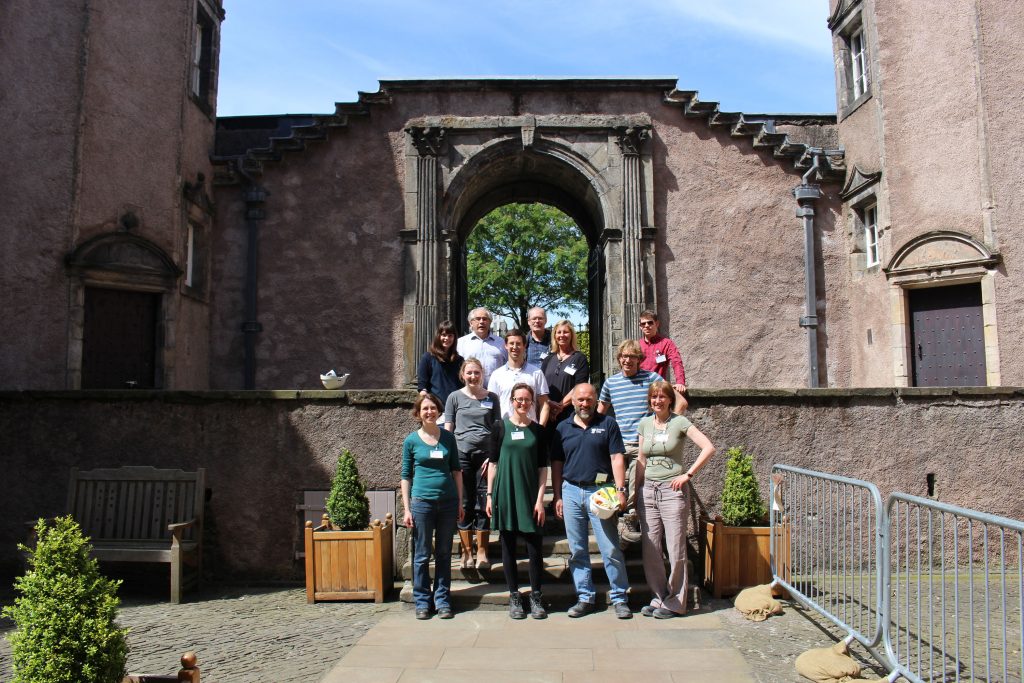Earlier this month, we were lucky enough to play host for the day when other like-minded members of Fit for the Future (FFtF) visited Stirling. Fit for the Future is a solution-sharing network for organisations like us, that want to become more sustainable, reduce energy bills and have a positive impact on the environment. It works on the principle that, more often than not, the solutions are already out there.
Throughout the day of the visit, colleagues showed the other FFtF Members a variety of sustainability projects we’re working on at Historic Environment Scotland. Our Major Projects and Architect colleagues did a wonderful job showing everyone the work that’s going on behind the scenes!
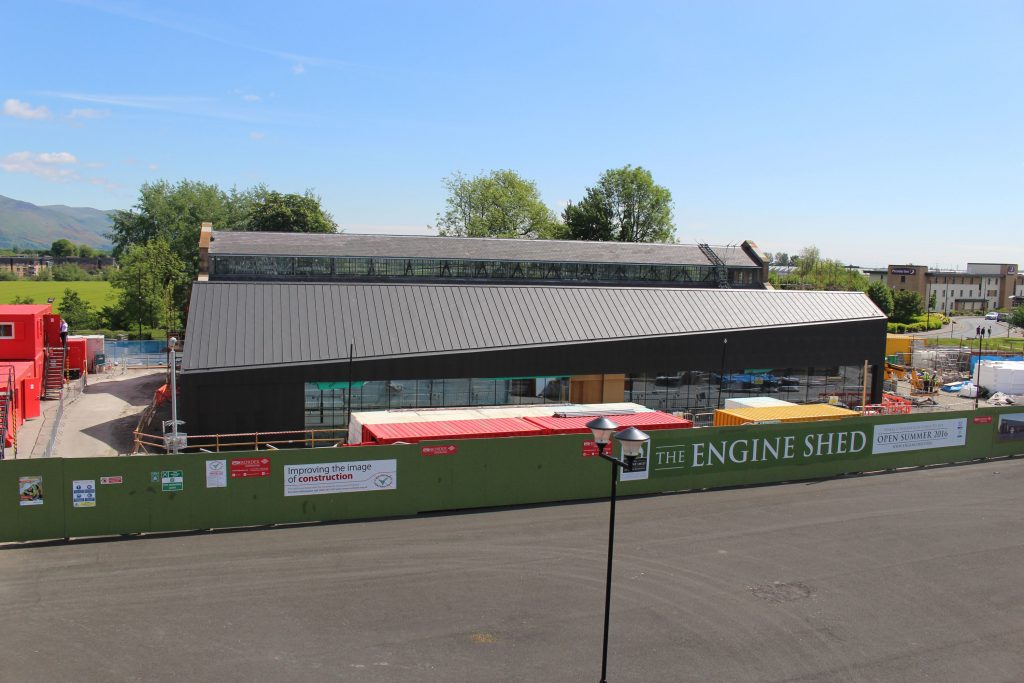
Engine Shed exterior (Source – Sophie McGovern, FFtF)
The day began with a tour of our exciting Engine Shed site, currently under construction by Stirling Railway Station (former Army store). When it opens, The Engine Shed will be a showcase for Scotland’s expertise in building conservation; a unique space for learning about traditional skills and materials with interactive displays open to the public and courses, workshops and conferences for professionals or those with an interest in conservation. There will be great public transport links to the new facility due to its proximity to Stirling Railway and Bus Stations.
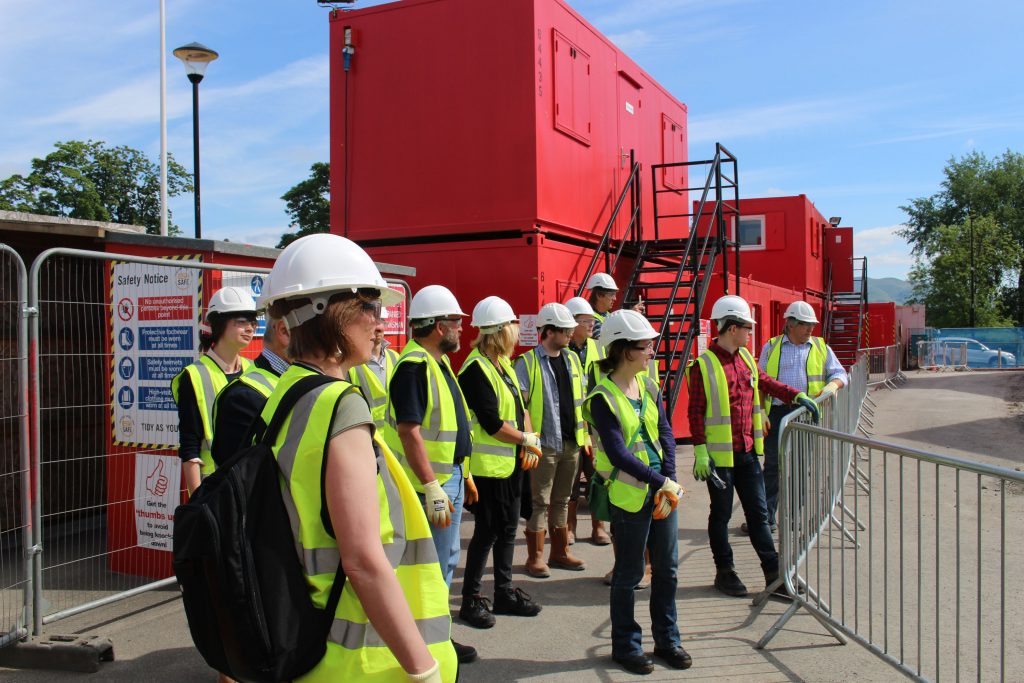
Fit for the Future Members start the tour at the Engine Shed site (Source – Sophie McGovern, FFtF)
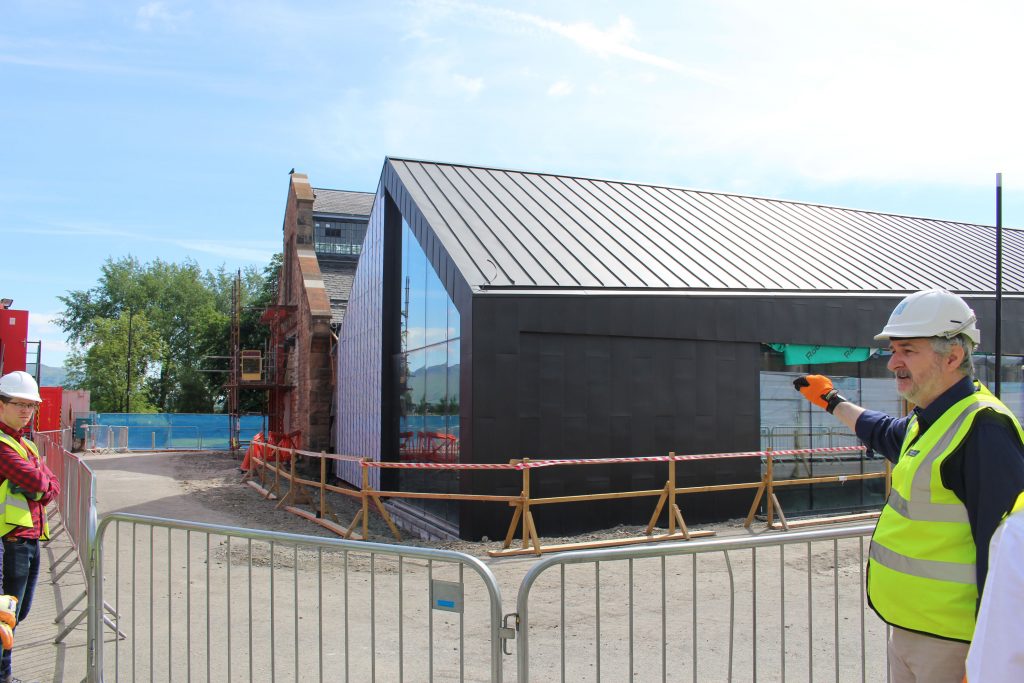
The Group look at the exterior and interior features of the site (Source – Sophie McGovern, FFtF)
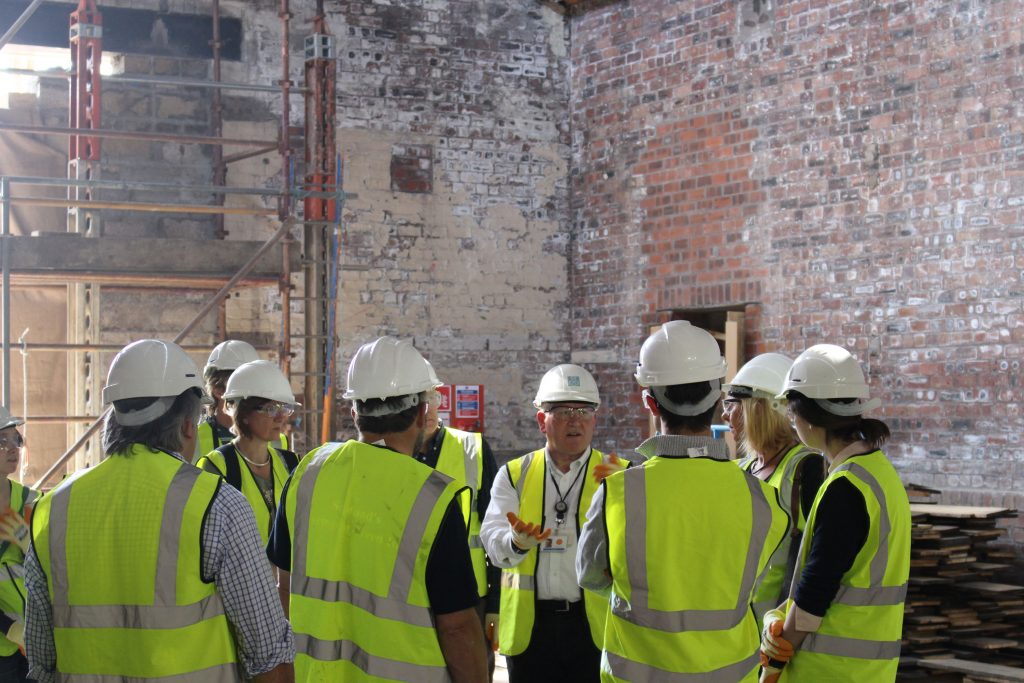
The Group look at the exterior and interior features of the site (Source – Sophie McGovern, FFtF)
There are many sustainable features of the construction phase which are worthy of mention including a ground source heat pump which will supply the heating to the building. In line with good conservation principles original features such as windows, ceiling joists and original brick were retained to keep the character of the original industrial building and use of clerestory roof-lights will also allow natural ventilation. Traditional pointing of lime and sand mortar is being used throughout and reuse of salvaged stone from a local site is being supplemented by stone supplied from a local quarry. Other natural materials in use are clay board, sheep’s wool insulation and zinc cladding for some of the roof. Zinc is very long-lasting, highly recyclable and durable due to its self-protecting properties. We will explore these themes further in future posts to the blog – watch this space.
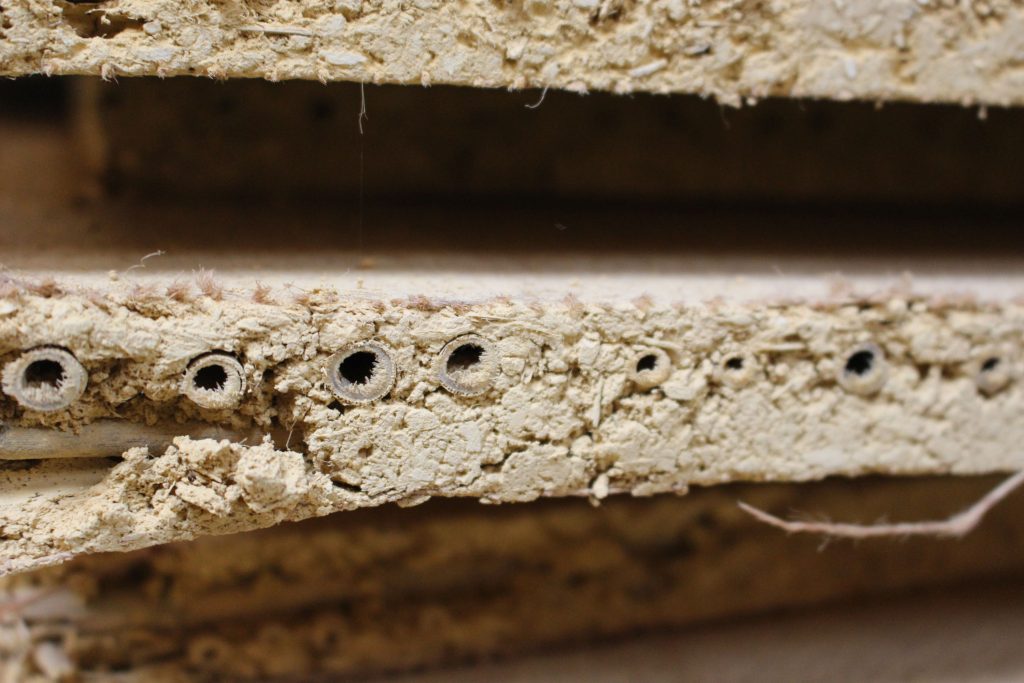
Use of natural materials: clay board and sheep’s wool insulation (Source – Sophie McGovern, FFtF)
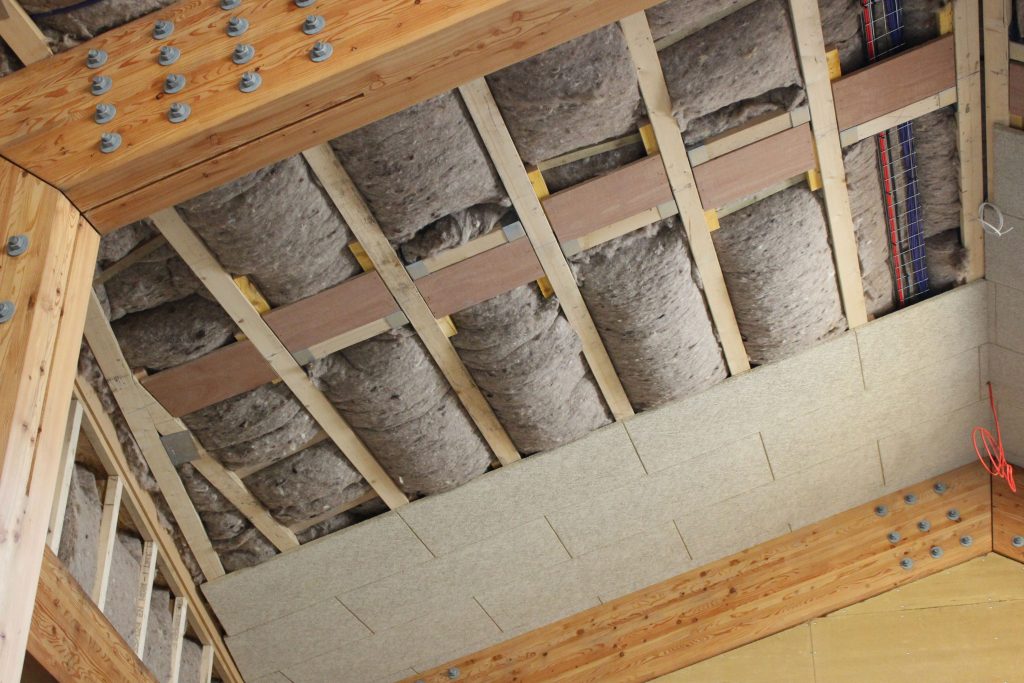
Use of natural materials: clay board and sheep’s wool insulation (Source – Sophie McGovern, FFtF)
After the Engine Shed, the next stop was Argyll’s Lodging (Scotland’s finest seventeenth century townhouse) where we saw an array of other sustainable interventions including secondary glazing units that work with historic sash and case windows. The group was also able to see the Science Team’s Thermal Camera in action, which helps identify areas of excess heat or cold, highlighting problem areas such as damp or over-heating in buildings such as walls, ceilings, floors etc. This has proved invaluable for spotting hidden problems in our properties. We also saw sheep’s wool insulation within the roof spaces at Argyll’s Lodging.
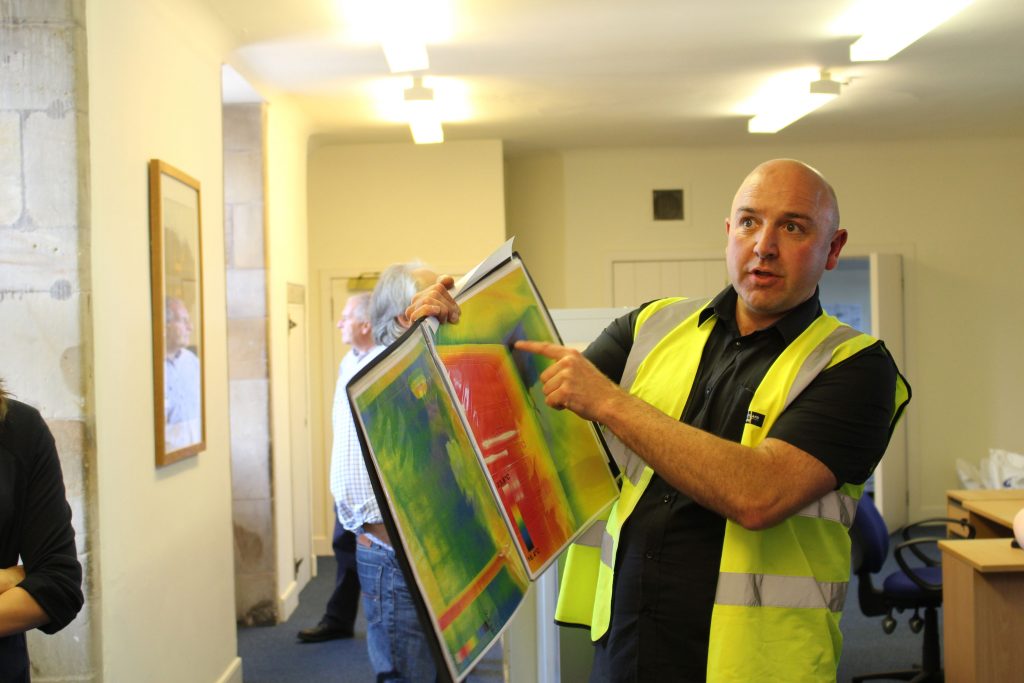
Thermal improvements to office spaces including new secondary glazing (Source – Sophie McGovern, FFtF)
We finished our tour seeing conservation works in action at Stirling Castle – including a trip up the Foreworks scaffold to see drainage improvements underway. These works will help us manage the increasing rainfall we’re experiencing, which is linked to the changing climate.
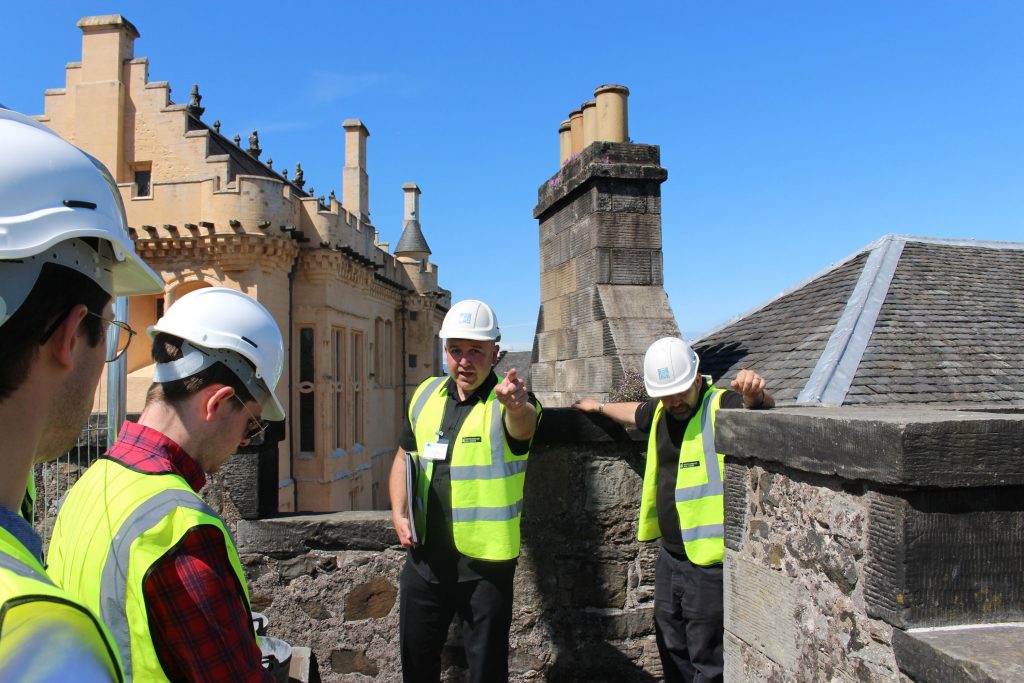
Drainage works from scaffold at Foreworks, Stirling Castle caused by increased rainfall (Source – Sophie McGovern, FFtF)
It was also an opportunity for the delegates to see our refurbished litter bins, which are now in place throughout the Castle, which have been retrofitted for recycling – a great reuse story and means we’re now recycling 88% of visitor waste!
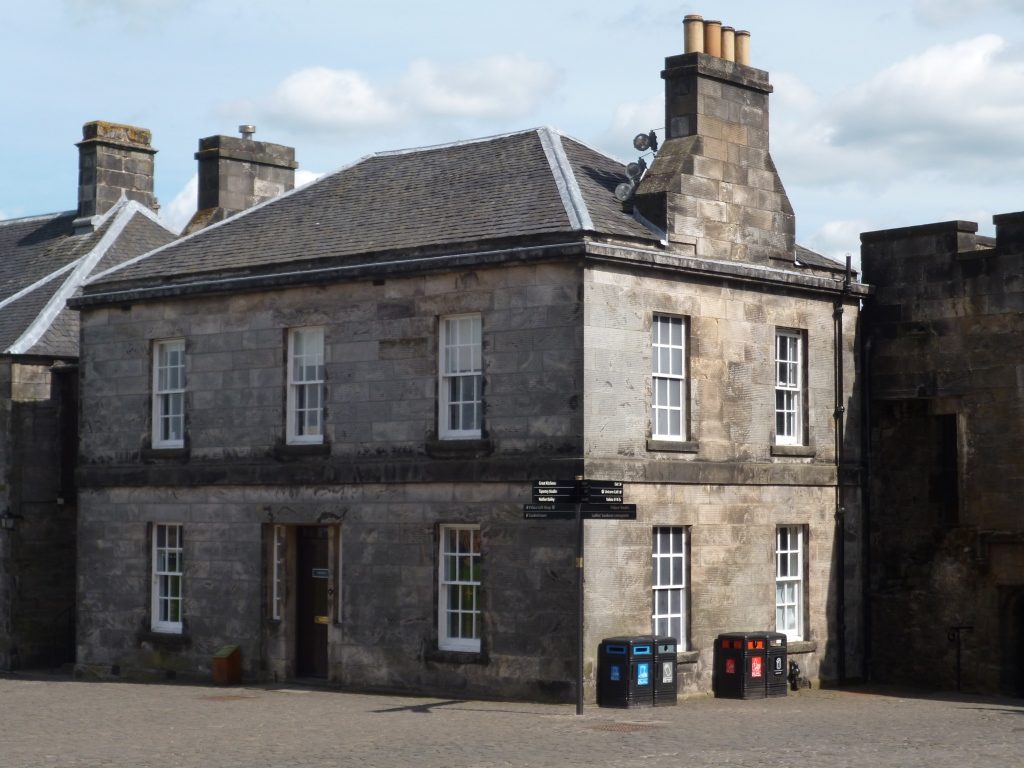
Refurbished litter bins transformed for recycling for visitor waste (© Historic Environment Scotland)
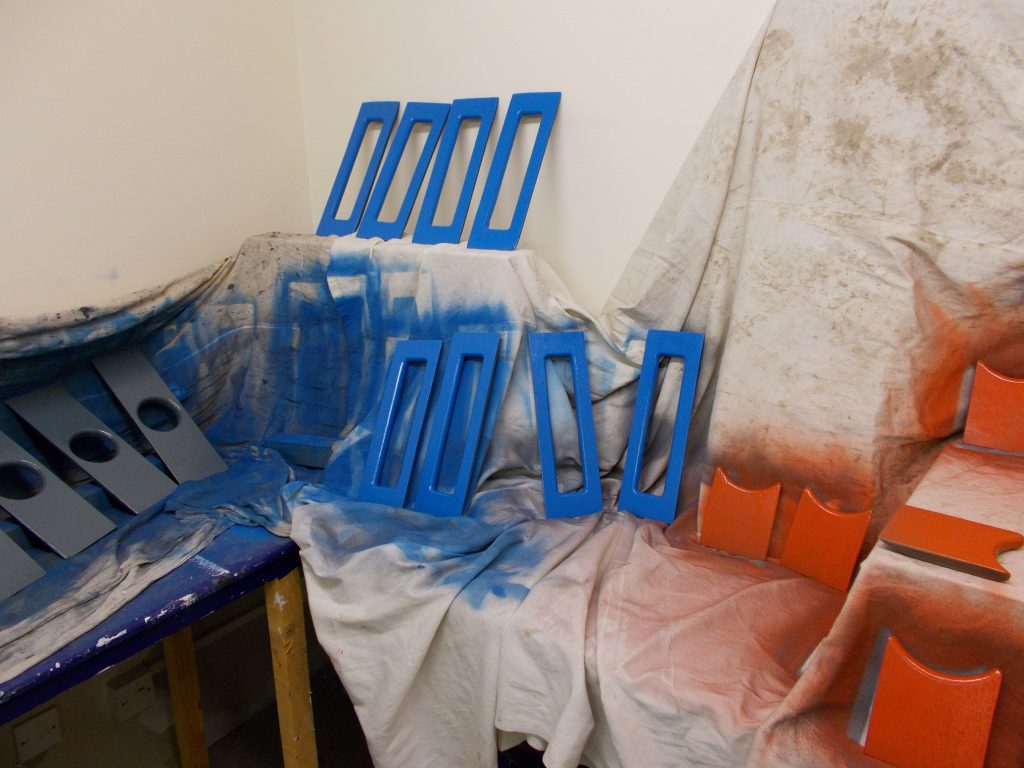
Apertures were cat and painted by our apprentice joiners (© Historic Environment Scotland)
Carbon savings achieved in FY 2015-16 at Argyll’s Lodgings and Stirling Castle since our Carbon Management Plan baseline year of 2008-09 were 10% and 2% respectively and additionally a reduction in energy consumption of 7% and 3%.
Heating upgrades and controls often take a few years to see payback, so we hope to achieve further savings in the years to come. It should also be noted that there’s been a significant change in use of the buildings at Stirling Castle since our baseline year with the refurbishment of the Stirling Palace apartments now being a highlight of a visit there.
All in all, it was a very enjoyable and informative day with like-minded people sharing ideas and best practice on an array of sustainability projects. We look forward to hosting similar events in the future.
Further Reading
See Fit for the Future’s photo blog of the day here and find out details about how your organisation can join the network.
Our Technical Publications – these include INFORM and Short Guides on many aspects of building conservation.

